The Complete Guide to App Advertising
Get a PDF copy of the guide using the form below, or scroll down to read the entire guide right on this page.
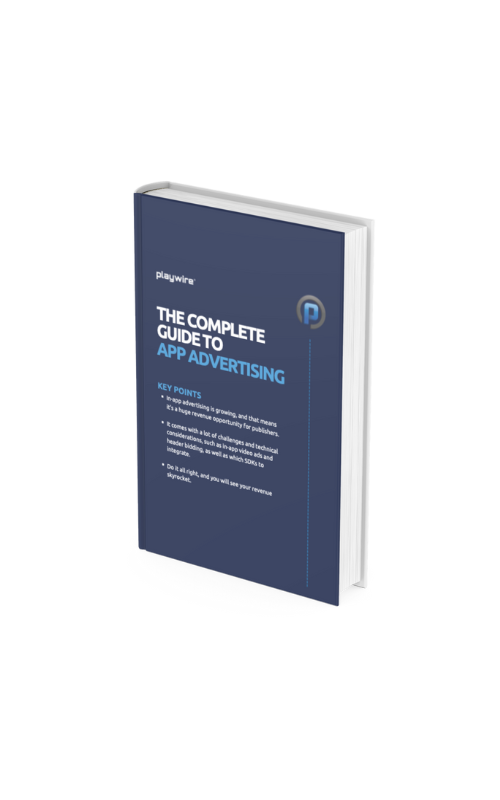
Don't Have Time To Read the Entire Guide Now?
We'll email you a downloadable PDF version of the guide and you can read later.
All of our content is generated by subject matter experts with years of ad tech experience and structured by writers and educators for ease of use and digestibility. Learn more about our rigorous interview, content production and review process here.
Built with the expertise of:
INTRODUCTION
- In-app advertising is growing, and that means it's a huge revenue opportunity for publishers.
- It comes with a lot of challenges and technical considerations, such as in-app video ads and header bidding, as well as which SDKs to integrate.
- Do it all right, and you will see your revenue skyrocket.
Apps are big-league money makers for publishers. Mobile app ad revenue reached nearly $582 billion in 2020. By 2023, global app revenue is expected to top $935 billion.
With that kind of revenue potential, many publishers are eager to get in on mobile apps. In 2022, you have plenty of app revenue models to choose from, but one of the most popular and lucrative is in-app advertising.
To help you decide whether in-app ads are the right choice for your app, we have put together this guide to in-app advertising revenue generation.
Let's get into it.
This guide to app advertising is a great place to start, but many publishers end up working with Playwire. Why? Because we make it all easy for you while we maximize your in-app advertising revenue. Interested? Contact us today.
table of
contents
What is App Advertising?
In-app advertising is the process of serving ads to the users of apps. If you’re an app publisher who reaches a significant user base, advertisers will pay you to put their ads in your app for users to see.
That’s the simplest definition, but the reality behind the scenes is much more complex. However, the basics remain the same. You have access to your user base, advertisers want that access and they will pay you for it. Complete this exchange thousands of times per day, and you build a revenue stream that can support your business.
Types of In-App Ads
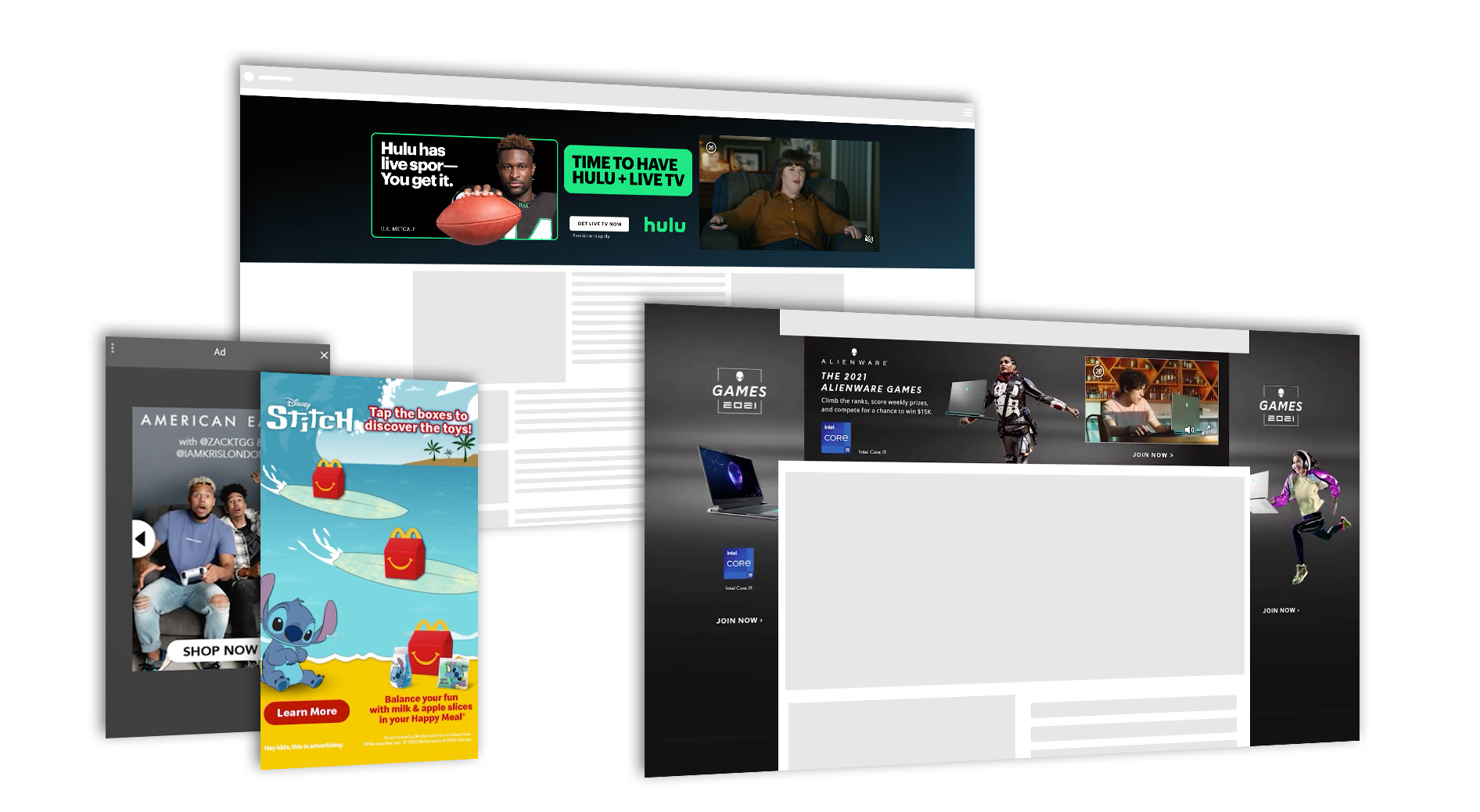
When you are trying to decide what kinds of ads you want to include in your app to drive mobile app ad revenue, you need to understand the available types. Of course, most publishers have two main goals: to earn the most money possible and preserve the user experience. With the right combination of ads, you can accomplish both goals.
There are several types of in-app ads to choose from:
- Banner ads
- Interstitial ads
- Native ads
- Gamified ads
- Rewarded ads
Banner Ads
Banner ads typically sit alongside your content for the entire time the user is viewing the content. They appear as images, animated images, and clickable assets and are used by advertisers that may want to drive brand awareness or produce a call to action. You can pick out the sizes that suit your app and complement your content.
These ads look very much like traditional desktop web publishing ads. While they can be easier than some other mobile app ad units to implement, they also tend to offer the lowest CPMs. Their value lives in the volume you can serve.
Interstitial Ads
Welcome to full-screen takeover: interstitial ads happen between phases of an app user's journey, appearing very differently than a banner ad. In a mobile game, the user might, for example, complete a level of the game. And, before the next level loads for the user, a full-screen interstitial ad appears, motivating the user to engage with the ad in the game's absence.
Interstitial ads can be text, images, or video. Using videos in this format can help generate great CPMs. In fact, video ads usually offer some of the highest available CPMs for app publishers.
Native Ads
These are ads that look like a natural part of the app and provide little interruption to the user's experience. While they may be marked as ads, their look and feel are very much like the rest of the content inside the app.
Gamified Ads
What's more engaging than a video game? Almost nothing. That's why gamified ads have become such a popular type of mobile advertising. These ads, which yield the highest in-app ad CPMs for publishers, present the user with a game to complete within the ad.
It could be as simple as M&M's viral Eye-Spy Pretzel game or as complex as a platform scroller game — but it has to be custom. You won't be able to sell gamified ad inventory programmatically. These are direct-sell ads, which is part of why they generate such high CPMs.
Rewarded Ads
With rewarded ads, you incentivize ad views by giving perks or bonuses after the app has launched. The reward could be in-app currency, coupons, more lives in a mobile game, or anything that has value to the user.
Rewarded ads come up in cases where the user's experience is fully interrupted. The user knows ahead of time that they will get something in exchange for viewing (e.g., when playing a game, a rewarded ad may provide the user extra lives in exchange for watching a video ad).
How to Pick the Right Ad Formats for Your App
You know the types of in-app ads. But how do you decide which one is right for your app?
This is a tough decision that many publishers have to make. It's all about looking at your app and understanding where you can feasibly place ads that will be effective and preserve the user's experience.
Is your app a first-person shooter with levels? Perhaps you would want to go with interstitial video ads between levels. Have a chess or board game app that maintains a continuous screen throughout? Banner ads beside the content might work nicely. Does your app offer lives, levels, or in-game currency? Rewarded ads could be the right fit.
Here's the point: In-app advertising revenue generation is not one-size-fits-all. It's unique to your app and your preferences. A good mobile app advertising partner will walk through your app with you to look for ad opportunities that could work well for you.
But at the end of the day, it's about what you feel comfortable with. The process of adding ads to your app should be collaborative and leave you with a full picture of the mobile app ad revenue potential for each iteration of your strategy.
Tools in Your Toolbox: The App Publisher’s Ad Tech Stack
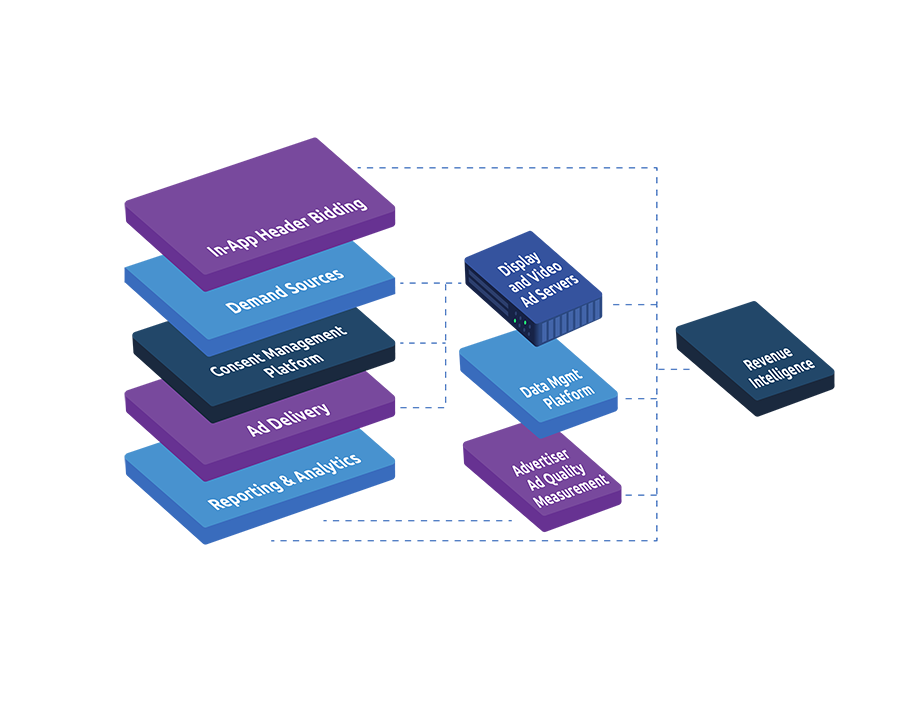
Think of setting up in-app advertising like building something from a set of instructions. In that scenario, you get a preview of the tools you’re going to need. Here are the tools you’re going to need (a.k.a your ad tech stack) in order to do in-app advertising the right way:
Ad Server
In the world of mobile apps, ads don’t reach user eyeballs without an ad server involved in the process at some point. Ad servers come in a lot of different shapes and sizes, but they all have this in common: They put the right ads in front of the right people at the right times. That’s their primary function.
You’ll have choices when you go to pick out an ad server for your app. However, you may find that you don’t end up making a dedicated decision about which app ad server you’re going to use. That’s because many in-app advertising tools have rolled ad serving into their list of capabilities in an attempt to sweeten the pot for potential customers.
In-App Header Bidding
You don’t have to start out with a header bidding tool picked out and implemented, but know that you will need one if your app advertising efforts go according to plan. Once you’ve got a handle on the basics, you’re going to want to graduate to header bidding in order to increase your revenue.
In-app header bidding simply improves the programmatic auction process. It’s a real-time auction for each impression in which bidders are blind to other bids, and the best bid wins. That’s as opposed to the waterfall method, which selects the first acceptable bid from an advertiser.
The process of actually doing header bidding is complicated and requires a dedicated tool. That’s the choice you’re eventually going to have to make. There are options here, but the main idea is to implement a tool you’re comfortable using that allows you to integrate as many sources of demand (header bidders) as you want.
Consent Management Platform
Particularly as attribution rules change in the mobile app space, consent management is more important than ever. This is the process of gathering “opt-ins” for behavioral tracking that generates valuable data.
There’s no need to hard-code all of this stuff yourself. In fact, doing so could put you at risk because then you have to keep up with the constantly changing rules and regulations surrounding mobile app privacy.
Most publishers are best served by established consent management platforms (CMPs). These tools handle everything from tracking to creating opt-in requests that convert.
Data Management Platform
Data management platforms (DMPs) enable you to actually do something with all the data your users create when they use your app. Whether it’s their demographic information or their behavior inside your app, these data points have real value.
Why? Because a high-quality DMP can organize them into audience segments that provide real value to advertisers, who will then be more likely to purchase your ad inventory — and do so at higher prices — to reach those particular audiences.
To put it simply, if you aren’t using a DMP, you’re leaving money on the table. And no app publisher wants to do that.
Challenges of In-App Advertising
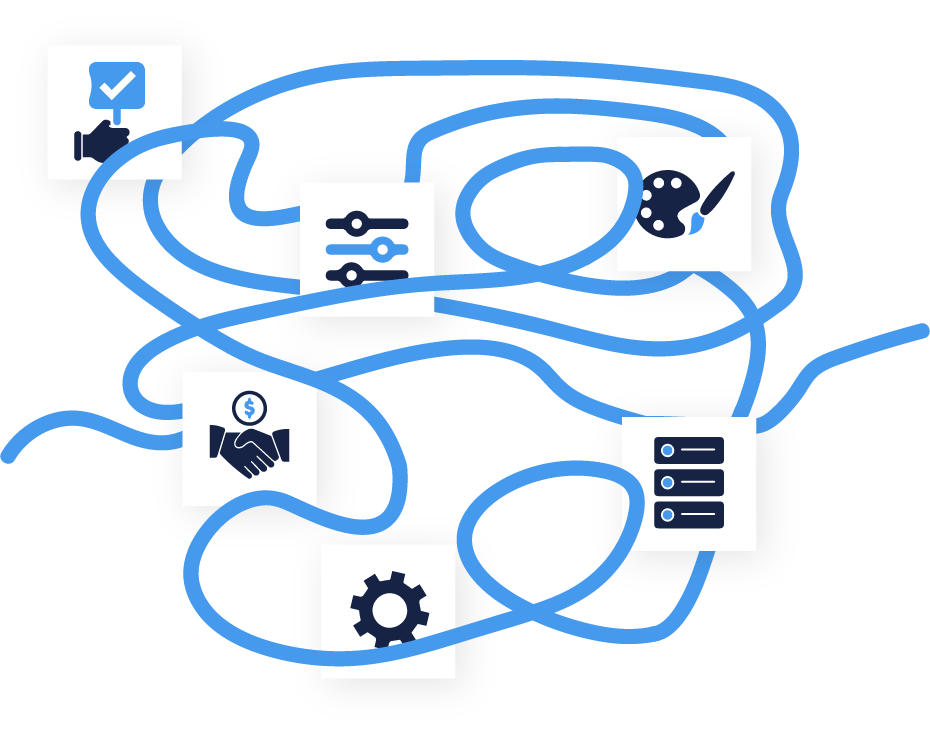
Forgive us if we’ve painted you a rosy picture. The truth is that in-app advertising isn’t easy. It’s hard — especially if you’re not a publisher who has a lot of technical knowledge and dev resources.
Here is a look at some of the most common challenges app publishers face as they try to do in-app advertising:
Balancing SDKs
Publishers who are new to in-app advertising often face some obstacles as they try to bring in revenue. That's because it's a lot harder to get started with in-app ads than with ads on a website.
On a website, you can make changes and see them live in real-time to make sure they work. You can change up your ad inventory layout and offerings with little effort.
But in a mobile app, you face some unique challenges as you try to implement or change your ad strategy:
- You have to ensure that all of the software development kits (SDKs) you and your ad partners are using work together.
- You have to make changes to your app in a testing environment.
- Then, you have to resubmit your app to the major app stores for approval.
After you have resubmitted your app and gotten it approved, you then can see whether your changes were effective. If this sounds inefficient, that's because it is. It takes a lot longer to get mobile ads up and running and a lot longer to make changes to them.
Sourcing Demand
That SDK struggle often contributes to a separate problem: sourcing demand. To bring in programmatic advertising revenue as an app publisher, you have to connect some kind of demand for your app’s ad inventory to your SDK configuration. That usually involves integrating yet another SDK.
But here’s the issue: That’s just one source of demand. In-app inventory demand is like anything in economics — more competition leads to greater profits. Even if your single source of demand is a huge one, such as Google, you’re leaving potential revenue on the table if you’re only working with that one source.
Impressions will sometimes go unfilled, and CPMs will just be the best that single demand source has to offer — not the best available among all buyers.
So, you want to source plenty of demand from diverse demand sources, but you may find yourself hesitating to do the work of that because you don’t want to break something or even deal with your mess of SDKs. And any hesitation here translates to money quite literally lost.
Related: Learn more about the differences between Cost Per Acquisition (CPA) based demand and CPM-based demand.
Dealing with Privacy Issues
If you’re looking to more advanced app publishers and feeling jealous that they have it all figured out, don’t. Here’s why: All app publishers face a turbulent and fear-inducing legal challenge as they try to bring in revenue from in-app advertising.
Many of those established publishers suffered greatly when Apple announced that tracking the Identifier for Advertisers (IDFA) of app users required an explicit opt-in. Suddenly, publishers and advertisers couldn’t track app installs — a primary ad performance metric — and the whole in-app advertising ecosystem was under threat.
Publishers and advertisers suddenly found themselves scrambling for solutions. Some lost a lot of money or threw in the towel completely. That all happened from one change — not even a legal change. A single company made a single privacy-focused change, and the whole in-app advertising industry started shaking.
It happens all the time. And for an individual app publisher who is building a business based on in-app advertising revenue, it’s disheartening at best and existentially threatening at worst.
Looping in Direct Sales Demand
Direct ad sales may feel a little outdated when you’re talking about SDKs and programmatic advertising, but it’s a mistake to discount the value of direct sales for app publishers. Classic insertion order (IO) buys handily outdo most programmatic buys when it comes to yield.
The problem, of course, is actually doing direct sales. It’s a two-pronged issue:
- Maintaining a direct sales team is expensive, particularly at first before it is generating enough revenue to pay for itself.
- Getting a seat at the table with the premium buyers who are interested in IO buys is a long-term play. You have to build a brand — not to mention a user base — that is well-known and attractive enough to the major brands with advertising money to burn.
Those issues are enough to turn away even the most determined app publishers. It happens all the time, and it’s a shame because much higher CPMs are on the other side of the struggle to build up a direct sales game.
Supporting High-Value Ad Units
Let’s just admit something: In apps, display banners are tiny. They’re certainly not turning many heads or making a splash. This is a medium that requires a different approach to ad units in order to really get advertisers excited, but actually running the premium ad units that get buyers’ attention takes a lot of technical work.
For example, a gamified interstitial ad is enough to make many advertisers salivate. These units command attention by taking over the entire screen, and they foster engagement with brands by getting viewers to play a game. From an advertising perspective, it’s near perfection.
But for the publisher, even the sky-high CPMs that come with an ad unit like that may not solve the central problem: Most publishers have no idea how to accommodate complex, premium ad units like that. And even if they have a dedicated engineering and development team (which is often just one person for small to mid-sized publishers), finding the time and resources to build out an ecosystem in which these units thrive is a pretty heavy lift.
As you can probably guess, the result is often that publishers give up. They stick with lower-value but less technical ad units, and their revenue potential suffers.
Working with Mediation Partners for Mobile App Ad Revenue Generation
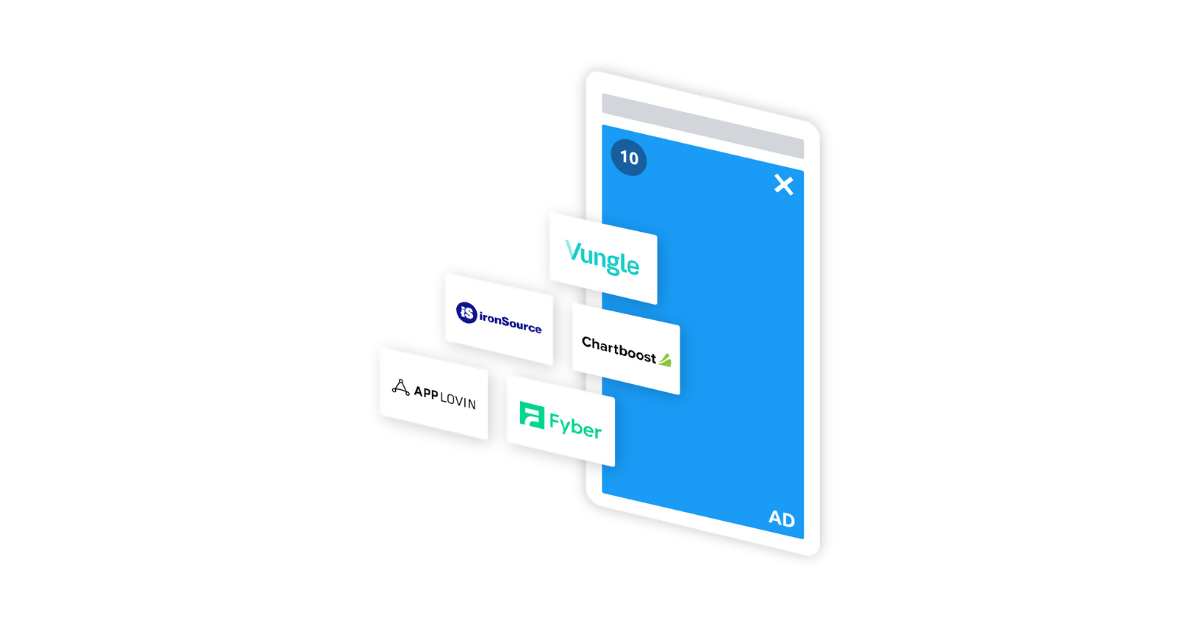
The above challenges are a big part of the reason why many publishers work with ad mediation partners.
Ad mediation is an app monetization solution that allows an app developer and publisher to handle multiple ad networks through a single SDK. If consolidation of revenue reporting and engagement metrics on a single dashboard is important to you, you'll also be pleased to discover that these monetization efforts can be quickly scaled.
When a mobile ad mediator manages the available ad space from your app, it will automatically send your supply to every ad network you are working with for you. Mediation partners are another way to tap into more advertising demand.
How to Build Your In-App Advertising Revenue at Scale

So far, we've discussed the nuts and bolts of ad formats and mediation partners, but we should zoom out for a moment to discuss how to scale up your in-app advertising smartly and safely.
The first thing to know is that you can do this wrong. You can go in too hard on in-app ads, shoehorn in a bunch of different types in too many places and watch your audience shrivel. You can slap a strategy together and never optimize it based on incoming data. You can get the technical side wrong.
But that's not going to happen to you because you're reading this guide. You're going to do this the right way.
Audience First, Then Ads
You're going to begin by focusing on building a real, dedicated user base for your app. No matter how tempting it is to start in-app advertising before you've even attracted a user, it is, in most cases, a bad idea.
Start by building your user base with a world-class app. Then, slowly introduce ads. At first, do only small, non-intrusive ads, and do them sparingly. A banner here and there will do the trick.
Don't add anything else until you've gotten some feedback from your app's users. Based on the feedback you get, tweak your strategy, slowly adding more ads until you're generating solid revenue but preserving your user base.
Don't Fear Premium Ad Units
But don’t get stuck in your early patterns. There’s nothing wrong with simple banners and video units, but there is something wrong with only ever doing those and never trying out the many premium in-app ad units.
For example, if you never run rewarded video inside your mobile game, you’re missing out on some of the highest CPMs available in the app space today. Don’t let the technical side scare you — many partners (like Playwire) will take care of that for you.
Don’t let fear stand in the way of progress when it comes to your in-app advertising strategy. Remember — there’s no harm in trying something new and walking it back if it doesn’t work.
Leverage Your Data
Yes, data and privacy are changing. But one thing remains the same: The data your app’s user base generates has real value. That is, it has real value if you use it correctly.
Simply understanding more about your app’s users has value of its own, but that’s not what we’re talking about here. We’re discussing the value of data as it relates to what you can charge advertisers to reach your audience.
Your user data tells the story of your audience — who they are, where they are, how engaged they are, what they buy, what they like, and more. For advertisers, that’s an uncut gem. You can cut and polish it by creating audience segments that illustrate who, exactly, buyers are reaching when they purchase your app’s impressions.
Don’t panic — you don’t have to become a data scientist. You just have to find the right data management platform (DMP). These tools offer varying levels of ability and service, but the main idea is that they take a lot of the grunt work and guesswork out of the picture so you can derive value from your data without taking up too much of your valuable time.
Optimize Always
The last thing to remember is that scaling up your revenue from in-app advertising is an ongoing process — it never ends. You should never stop optimizing your strategy based on user feedback and hard data, as well as tests you want to try.
If you stop optimizing your strategy, it will one day stop working as well as you need it to. Keep going, and soon you'll have a mobile app ad revenue machine.
Adding In-App Video Ads: The Next Big Leap
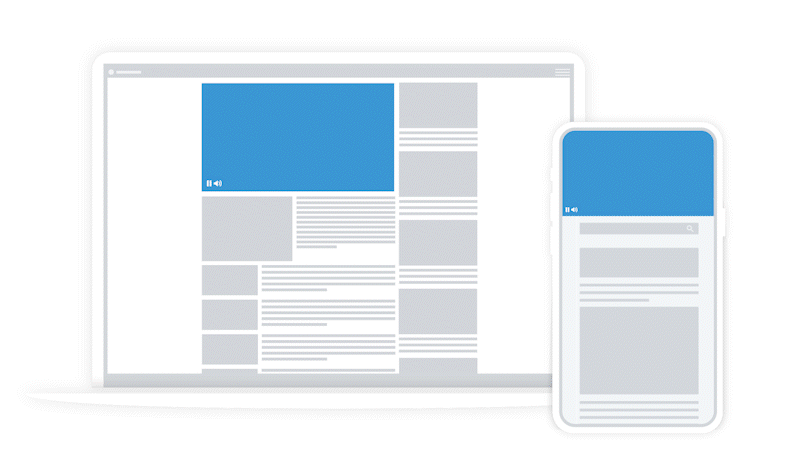
As you build out your in-app advertising strategy, you are likely going to consider adding some video to your in-app advertising strategy. That's because there's big money in in-app video advertising (try $18 billion in 2021).
How much adding video to your mobile app advertising strategy will affect your revenue will depend on a variety of factors. The type of app you have, the video ad format you choose, and whether you're doing direct sales will all play a part in how much you make.
How to Add Video Advertising to Your App Ad Strategy
There’s some good news: Many mobile ad exchanges and networks already do video ads, so you can dip your toes into video ads without having to do too much on the technical side. However, you will have to do a few things.
First, you’re going to have to have some kind of a video player. That’s the only way you’re going to be able to run video ads inside your app. Ideally, the video player’s SDK will be capable of initiating calls for programmatic auctions and doing header bidding.
Remember, too, that you don’t necessarily have to have video content in order to do video ads. In fact, many apps that benefit from the high CPMs of video advertising don’t actually create video content.
Mobile games are a great example. They often run interstitial video in between levels or at the start or end of each game. It’s a great way to generate ad revenue without being too disruptive to the user experience — particularly if you have an engaged and broad user base.
You can get a complete breakdown of how to increase your mobile app ad revenue with video ads here.
Breaking Through to the Big Time: In-App Header Bidding
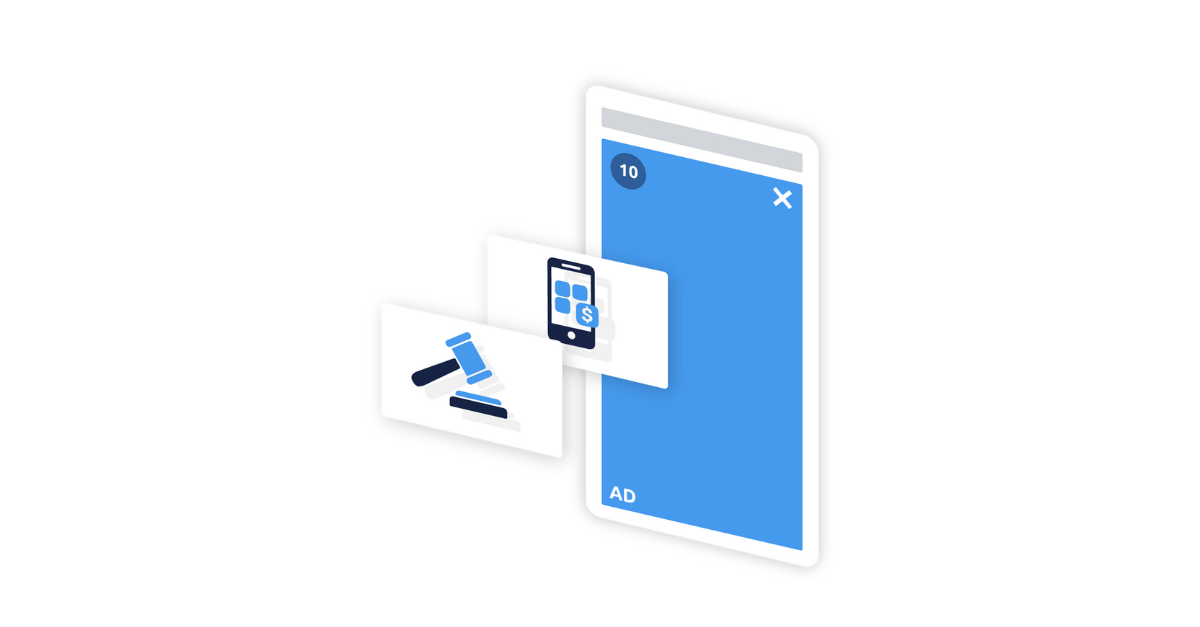
Once you're more than a beginner in in-app advertising, it may be time to move on to the big time: in-app header bidding.
In-app header bidding is like header bidding for web in that it turns the traditional programmatic auction process on its head. Instead of your SDK sending out a request for bids and accepting the first one that exceeds your price floor (the waterfall method in a nutshell), you get the highest bid on every impression. How? By soliciting bids and accepting the highest one instead of the first one.
That's potential. And it's a big part of how app publishers go from middling revenue to revenue in the seven figures.
It's exciting, but it's important to remember that, more than most any other step you've taken to reach this point, adding in-app header bidding is a big technical lift. You're going to need either a couple of experienced developers or a revenue partner like Playwire to implement, manage and optimize your in-app header bidding tech and strategy.
Do In-App Advertising Yourself, or Call in a Partner?
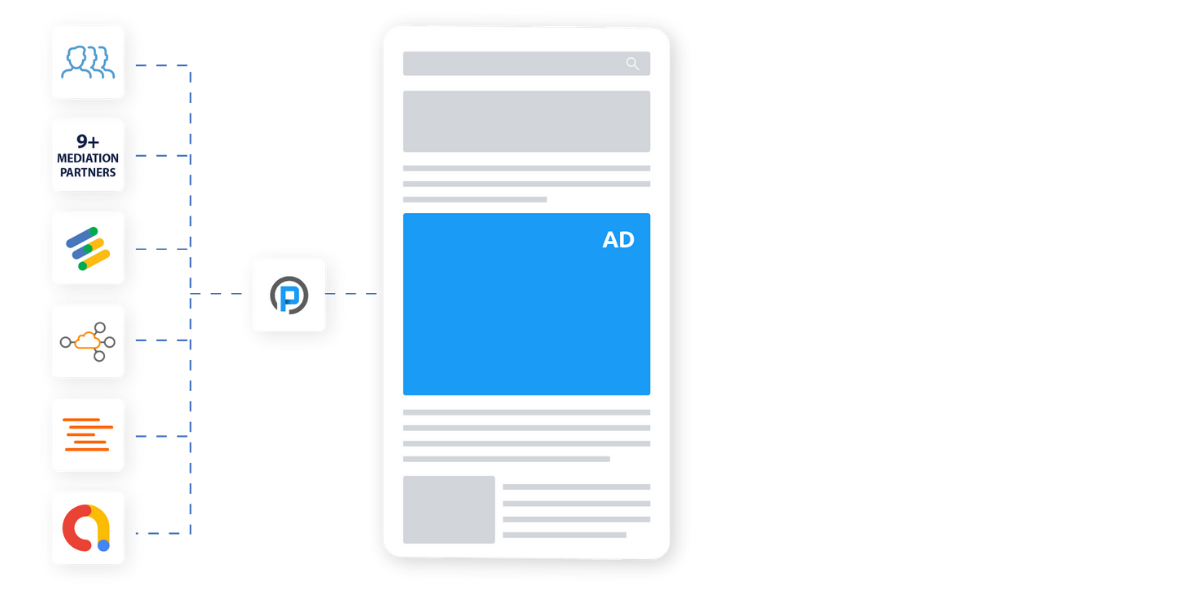
In-app advertising is the logical next step once you've built a solid user base for your app. But before you're bringing in advertising dollars, your budget may be limited. That means you should do all of this yourself, right?
Not necessarily. Not every app revenue partner out there can or will actually do the work, but the handful that can and will do the work well will increase your revenue by more than enough to make their services worth the cost. The increased revenue is the bottom line, but there are other key benefits of calling in a partner as you set up advertising in your mobile app:
Instead of having to painstakingly integrate every SDK yourself, you have a partner who will do it for you.
In a similar way, you don't have to worry about dependency management as you integrate SDKs. Your revenue partner should handle all dependency management for you.
Allowing yourself easy access to dozens of high-quality SDKs means you get access to incredibly broad demand. And more demand means higher CPMs for apps.
Our Ad Tech Build vs. Buy Series covers this topic in detail here.
About Playwire's SDK
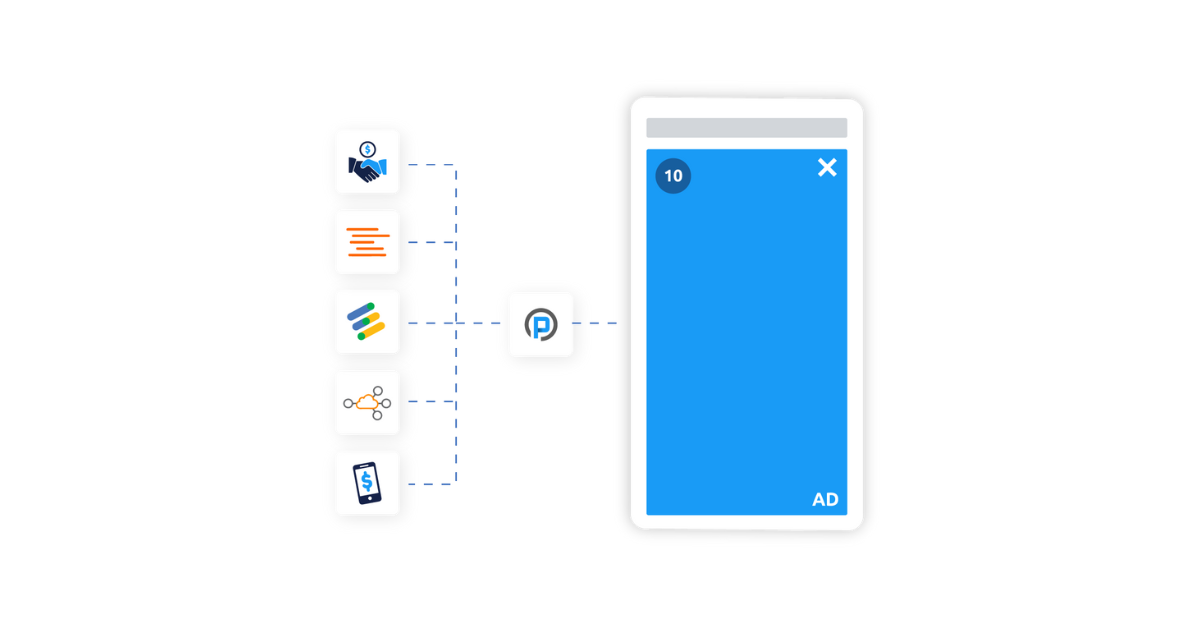
If you decide to work with Playwire, you won't have any need for a dozen SDKs. You'll just need one: Playwire's.
That's because Playwire's SDK is an SDK of SDKs. With one, you get many — and we have already managed the dependencies for each inside our SDK. That means you get integrations for the biggest header bidders, various high-quality mediation partners, and consent management all in a single, lightweight SDK.
Monetizing with Playwire vs. with a Single Mediation Partner
Why choose a revenue partner like Playwire to handle your in-app advertising when there are dozens and dozens of mediation partners out there? Because you want access to the broadest possible demand.
Broader demand means more competition, which means a lower likelihood of unfilled ad requests and unnecessarily low CPMs. How does Playwire increase your demand over a mediation partner? By integrating that mediation partner and various others into our SDK.
That way, your requests for ads fan out over vast networks — not just a single ad network tied to one mediation partner — and come back to you filled and at a very high CPM almost every single time.
Your Partner in In-App Ad Revenue Generation

Generating revenue from in-app advertising can be confusing — even overwhelming — for publishers who would much rather spend their valuable time creating world-class content.
You shouldn’t have to face that problem. You should do what you do best while a trusted leader in in-app advertising handles the rest. That’s what we do at Playwire. And to help us do it, we have built a dedicated platform for app publishers to amplify their revenue and take questions out of the equation.
Combine that with our global direct sales team and close relationships with major players in the app advertising space — think Google, Amazon, and the like — and you have a recipe for maximum revenue.
Just ask any app publisher who has worked with us. Read our case studies. Meet with our team. Try us out. Expect more revenue, and you’ll have your expectations met. Ready to get started? Contact us today.
Related Content
Feel free to visit our Complete App Advertising Resource Center, or dive deeper into any of these related articles:
- Where to Begin with Your In-App Advertising
- In-App Advertising with Google AdMob
- 5 In-App Advertising Revenue Models
- 5 Mobile App Video Advertising Tips
- A Guide to Mobile App Advertising
- In-App Advertising Cost Breakdown: From Investment to ROI
- In-App Advertising Revenue Models: CPA vs. CPM
- In-App Advertising: Mobile Apps vs. Desktop Apps
- The 8 Best Advertising Practices for App Develops
- The Complete Guide to In-App Advertising Revenue Generation
Amplify
Your Ad Revenue
Accelerate your business and uncomplicate your ad tech stack, because you deserve a partner and a platform that demands more for you.
